Investigations into Hydraulic Instability during the Start-Up Process of a Pump-Turbine under Low-Head Conditions
Abstract
:1. Introduction
2. Computational Model and Numerical Simulation Setup Methods
2.1. Full-Flow System Model of a Pumped Storage Power Station
2.2. Grid Partitioning and Grid Independence Verification
2.3. Boundary Conditions and Numerical Solution Method
2.4. Start-Up Implementation Methods
2.4.1. Moment Balance Equation
2.4.2. Moving Grid Technique
2.5. Setting of Pressure Monitoring Points
3. Results and Discussion
3.1. Numerical Simulation Validation
3.2. Analysis of the Unit’s External Characteristics
3.3. Analysis of Unit Pressure Pulsation Characteristics
3.3.1. Analysis of Pressure Pulsations in the Guide Vane and Runner Areas
3.3.2. Pressure Pulsation Characteristics in the Draft Tube Region
3.4. Analysis of Internal Flow Characteristics
3.4.1. Analysis of Guide Vane and Runner Flow Characteristics
3.4.2. Analysis of Flow Characteristics in the Draft Tube
4. Conclusions
- (1)
- During the low-head start-up process of the pump-turbine unit, in the phase of guide vane opening, flow vortical structures emerged, blocking flow passages specifically at the runner inlet, within the runner inter-blade channels, and at the draft tube inlet. This led to a decrease in flow rate and the generation of the water hammer effect, causing a rapid increase in pressure upstream of the runner. After the reduction of high-pressure due to the water hammer, the flow rate rapidly increased, causing a small negative water hammer and resulting in significant fluctuations in the head of the unit.
- (2)
- After the guide vanes stopped moving, the intensity of vortex structures at the runner inlet and outlet decreased. As the torque of the runner continued to decrease, the unit entered the S-shaped region and approached the no-load condition, leading to an enhancement of pressure pulsation. In addition, unstable vortex structures reappeared at the leading and trailing edges of the runner blades.
- (3)
- During the start-up process of the pump-turbine unit, unstable vortex structures formed in the draft tube region, at the intersection of the inflow along the wall of the tapered section and the backflow along the centerline of the draft tube. At the stage of increasing runner torque, as the flow worked on the runner, the rotational speed of the runner increased while the inflow velocity in the draft tube remained constant. The increased work on the suction side of the runner led to the extension of vortex structures from the center position of the tapered section downstream. At the stage of decreasing runner torque, the inflow velocity in the draft tube increased, and the vortex structures in the draft tube evolved into a double-layered structure near the center and near the wall, respectively. This vortex structure is also the source of low-frequency pressure pulsation in the draft tube and the instability of the unit under no-load conditions.
Author Contributions
Funding
Data Availability Statement
Conflicts of Interest
References
- Hoffstaedt, J.; Truijen, D.; Fahlbeck, J.; Gans, L.; Qudaih, M.; Laguna, A.; De Kooning, J.; Stockman, K.; Nilsson, H.; Storli, P.T.; et al. Low-head pumped hydro storage: A review of applicable technologies for design, grid integration, control and modelling. Renew. Sustain. Energy Rev. 2022, 158, 112119. [Google Scholar] [CrossRef]
- Guo, W.; Wu, F. Hydraulic-mechanical coupling vibration performance of pump-storage power station with two turbine units sharing one tunnel. J. Energy Storage 2022, 53, 105082. [Google Scholar] [CrossRef]
- Xia, L.; Cheng, Y.; Yang, J.; Cai, F. Evolution of flow structures and pressure fluctuations in the S-shaped region of a pumpturbine. J. Hydraul. Res. 2018, 60, 836–851. [Google Scholar]
- Li, D.; Fu, X.; Zuo, Z.; Wang, H.; Li, Z.; Liu, S.; Wei, X. Investigation methods for analysis of transient phenomena concerning design and operation of hydraulic-machine systems—A review. Renew. Sustain. Energy Rev. 2019, 101, 26–46. [Google Scholar] [CrossRef]
- Zuo, Z.; Fan, H.; Liu, S.; Wu, Y. S-shaped characteristics on the performance curves of pump-turbines in turbine mode—A review. Renew. Sustain. Energy Rev. 2016, 60, 836–851. [Google Scholar] [CrossRef]
- Pejovic, S.; Krsmanovic, L.J.; Jemcov, R.; Crnkovic, P. Unstable Operation of High-Head Reversible Pump-Turbines. In Proceedings of the IAHR 8th Symposium, Section for Hydraulic Machinery Equipment and Cavitation, St. Petersburg, Russia, 6–9 September 1976; pp. 283–295. [Google Scholar]
- Hasmatuchi, V.; Farhat, M.; Roth, S.; Botero, F.; Avellan, F. Experimental Evidence of Rotating Stall in a Pump-Turbine at Off-Design Conditions in Generating Mode. J. Fluids Eng. 2011, 133, 5. [Google Scholar] [CrossRef]
- Weber, W.; Kahler, J.; Magnoli, M.; Koutnik, J. Transient approach for identification of the S-shape region of pump-turbines. In IOP Conference Series: Earth and Environmental Science; IOP Publishing: Bristol, UK, 2019; Volume 240, p. 072037. [Google Scholar]
- Zeng, W.; Yang, J.; Hu, J. Pumped storage system model and experimental investigations on s-induced issues during transients. Mech. Syst. Signal Process. 2017, 90, 350–364. [Google Scholar] [CrossRef]
- Wang, H.; Wang, J.; Gong, R.; Shang, C.; Li, D.; Wei, X. Investigations on Pressure Fluctuations in the S-Shaped Region of a Pump–Turbine. Energies 2021, 14, 6683. [Google Scholar] [CrossRef]
- Yang, Z.; Liu, Z.; Cheng, Y.; Zhang, X.; Liu, K.; Xia, L. Differences of Flow Patterns and Pressure Pulsations in Four Prototype Pump-Turbines during Runaway Transient Processes. Energies 2020, 13, 5269. [Google Scholar] [CrossRef]
- Zhang, X.; Cheng, Y.; Yang, Z.; Chen, Q.; Liu, D. Influence of rotational inertia on the runner radial forces of a model pump-turbine running away through the S-shaped characteristic region. IET Renew. Power Gener. 2020, 14, 1883–1893. [Google Scholar] [CrossRef]
- Zhang, W.; Chen, Z.; Zhu, B.; Zhang, F. Pressure fluctuation and flow instability in S-shaped region of a reversible pump-turbine. Renew. Energy 2020, 154, 826–840. [Google Scholar] [CrossRef]
- Rezghi, A.; Riasi, A. The interaction effect of hydraulic transient conditions of two parallel pump-turbine units in a pumped-storage power plant with considering “S-shaped” instability region: Numerical simulation. Renew. Energy 2018, 118, 896–908. [Google Scholar] [CrossRef]
- Ciocan, G.D.; Iliescu, M.S.; Vu, T.C.; Nennemann, B.; Avellan, F. Experimental study and numerical simulation of the FLINDT draft tube rotating vortex. J. Fluids Eng. 2007, 129, 146–158. [Google Scholar] [CrossRef]
- Lais, S.; Liang, Q.; Henggeler, U.; Weiss, T.; Escaler, X.; Egusquiza, E. Dynamic analysis of Francis runners-experiment and numerical simulation. Int. J. Fluid Mach. Syst. 2009, 2, 303–314. [Google Scholar] [CrossRef]
- Gagnon, M.; Tahan, S.A.; Bocher, P.; Thibault, D. Impact of startup scheme on Francis runner life expectancy. IOP Conf. Ser. Earth Environ. Sci. 2010, 12, 012107. [Google Scholar]
- Tanaka, H. Vibration Behavior and Dynamic Stress of Runners of Very High Head Reversible Pumpturbines. Int. J. Fluid Mach. Syst. 2011, 4, 289–306. [Google Scholar] [CrossRef]
- Trivedi, C.; Cervantes, M.; Gandhi, B.; Dahlhaug, O. Experimental investigations of transient pressure variations in a high head model Francis turbine during start-up and shutdown. J. Hydrodyn. Ser. B 2014, 26, 277–290. [Google Scholar]
- Kan, K.; Chen, H.; Zheng, Y.; Zhou, D.; Binama, M.; Dai, J. Transient characteristics during power-off process in a shaft extension tubular pump by using a suitable numerical model. Renew. Energy 2021, 164, 109–121. [Google Scholar] [CrossRef]
- Kan, K.; Yang, Z.; Lyu, P.; Zheng, Y.; Shen, L. Numerical study of turbulent flow past a rotating axial-flow pump based on a level-set immersed boundary method. Renew. Energy 2021, 168, 960–971. [Google Scholar] [CrossRef]
- Sun, X.; Xia, G.; You, W.; Jia, X.; Manickam, S.; Tao, Y.; Xuan, X. Effect of the arrangement of cavitation generation unit on the performance of an advanced rotational hydrodynamic cavitation reactor. Ultrason. Sonochem. 2023, 99, 106544. [Google Scholar] [CrossRef]
- Xia, G.; You, W.; Manickam, S.; Yoon, J.Y.; Xuan, X.; Sun, X. Numerical simulation of cavitation-vortex interaction mechanism in an advanced rotational hydrodynamic cavitation reactor. Ultrason. Sonochem. 2024, 105, 106849. [Google Scholar] [CrossRef]
- Yin, X.; Huang, X.; Zhang, S.; Bi, H.; Wang, Z. Numerical Investigation of Flow and Structural Characteristics of a Large High-Head Prototype Pump–Turbine during Turbine Start-Up. Energies 2023, 16, 3743. [Google Scholar] [CrossRef]
- Jin, F.; Wang, H.; Luo, Y.; Presas, A.; Bi, H.; Wang, Z.; Lin, K.; Lei, X.; Yang, X. Visualization research of energy dissipation in a pump-turbine unit during turbine mode’s starting up. Renew. Energy 2023, 217, 119172. [Google Scholar] [CrossRef]
- Jin, F.; Luo, Y.; Wang, H.; Wang, Z.; Lin, K.; Lei, X.; Yang, X. Dynamic response of a pump-turbine runner during turbine’s mode starting up. J. Energy Storage 2023, 74, 109339. [Google Scholar] [CrossRef]
- He, L.; Wang, Z.; Kurosawa, S.; Nakahara, Y. Resonance investigation of pump-turbine during startup process. IOP Conf. Ser. Earth Environ. Sci. 2014, 22, 32024. [Google Scholar] [CrossRef]
- Nicolle, J.; Morissette, J.F.; Giroux, A.M. Transient CFD simulation of a Francis turbine startup. In IOP Conference Series: Earth and Environmental Science; IOP Publishing: Bristol, UK, 2012; Volume 15, p. 062014. [Google Scholar]
- Nicolle, J.; Giroux, A.M.; Morissette, J.F. CFD configurations for hydraulic turbine startup. IOP Conf. Ser. Earth Environ. Sci. 2014, 22, 032021. [Google Scholar] [CrossRef]
- Kan, K.; Zhao, F.; Xu, H.; Feng, J.; Chen, H.; Liu, W. Energy Performance Evaluation of an Axial-Flow Pump as Turbine under Conventional and Reverse Operating Modes Based on an Energy Loss Intensity Model. Phys. Fluids 2023, 35, 015125. [Google Scholar] [CrossRef]
- Kan, K.; Xu, Z.; Chen, H.; Xu, H.; Zheng, Y.; Zhou, D.; Muhirwa, A.; Maxime, B. Energy loss mechanisms of transition from pump mode to turbine mode of an axial-flow pump under bidirectional conditions. Energy 2022, 257, 124630. [Google Scholar] [CrossRef]
- Celik, I.B.; Ghia, U.; Roache, P.J.; Freitas, C.J.; Coleman, H.; Raad, P.E. Procedure for estimation and reporting of uncertainty due to discretization in CFD applications. J. Fluids Eng. 2008, 130, 078001. [Google Scholar]
- Ye, H.; Xuan, X.; Wang, M.; Sun, J.; Yang, M.; Zhang, X.; Guo, L.; Sun, X. Structural Optimization of Reactor for the Enhancement of CO2 Electrochemical Reduction Based on Gas-Liquid Mixing Flow Model. Energy Technol. 2024, 12, 2301142. [Google Scholar] [CrossRef]
- Qin, D.; Wu, X.; Zhang, J.; Wang, X.; Yan, N. Hydraulic optimisation design of axial flow pump based on blade velocity distribution. Int. J. Hydromechatron. 2023, 6, 311–324. [Google Scholar] [CrossRef]
- Zhu, D.; Xiao, R.; Liu, W. Influence of leading-edge cavitation on impeller blade axial force in the pump mode of reversible pump-turbine. Renew. Energy 2021, 163, 939–949. [Google Scholar] [CrossRef]
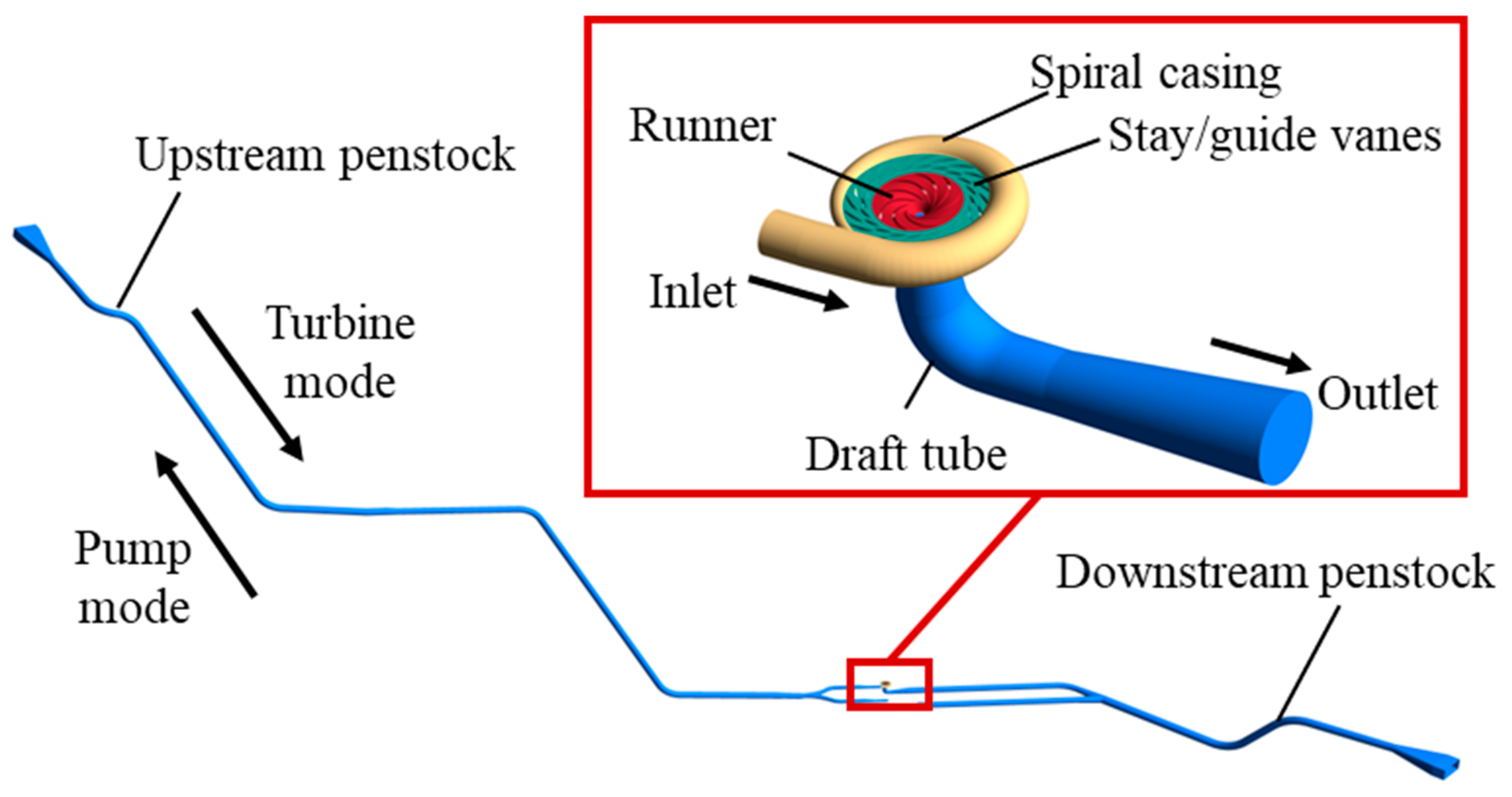
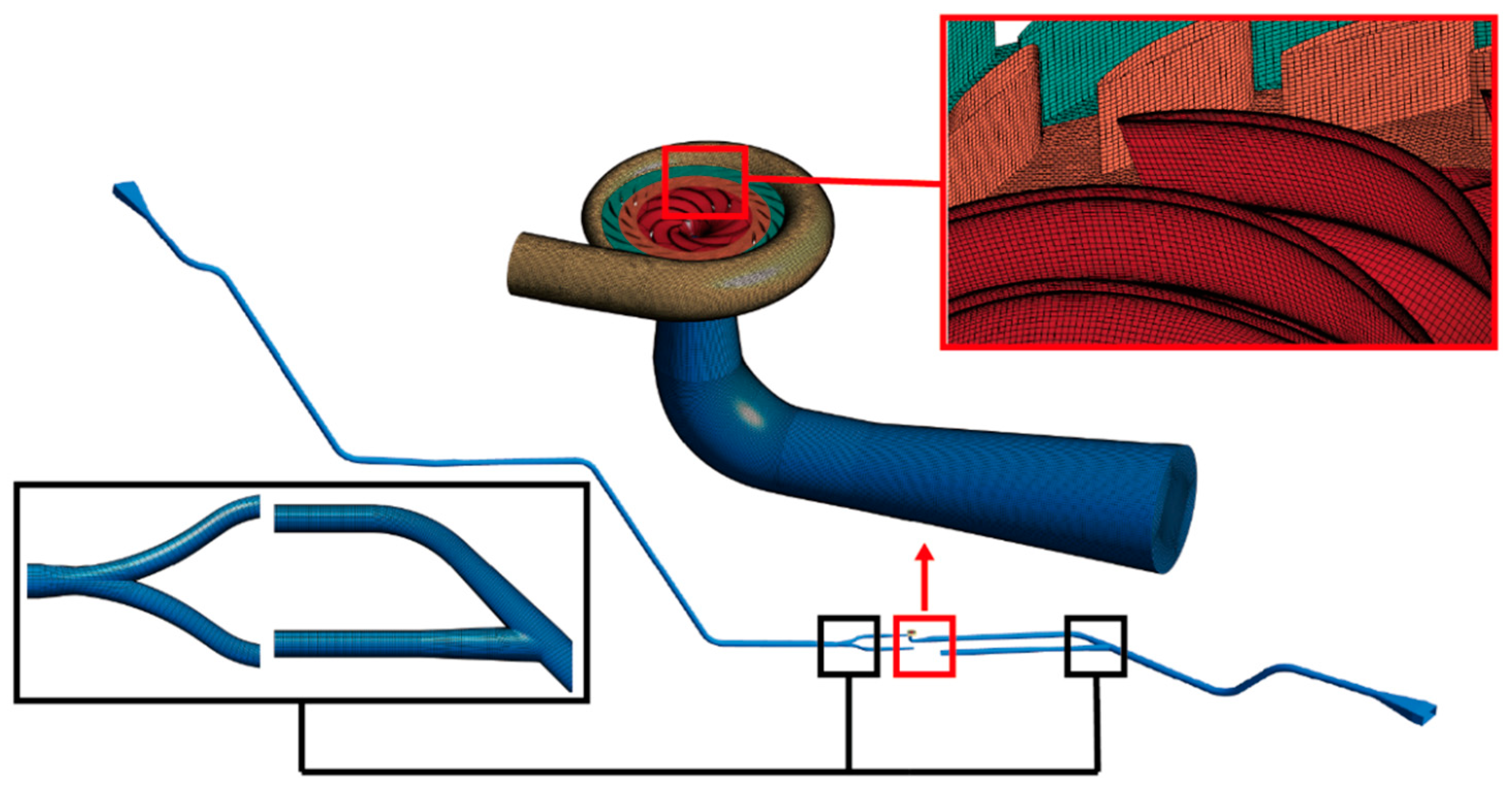
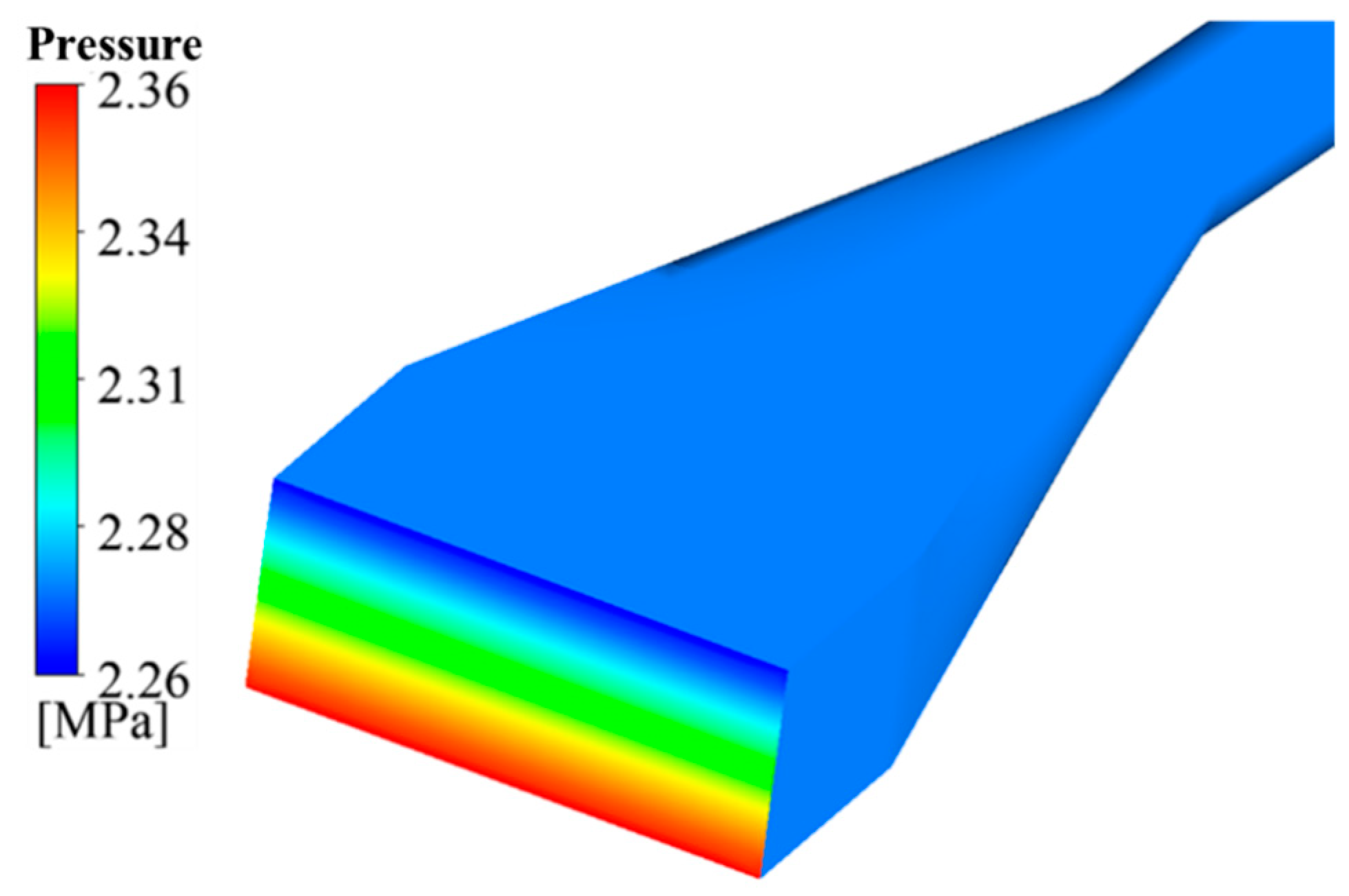
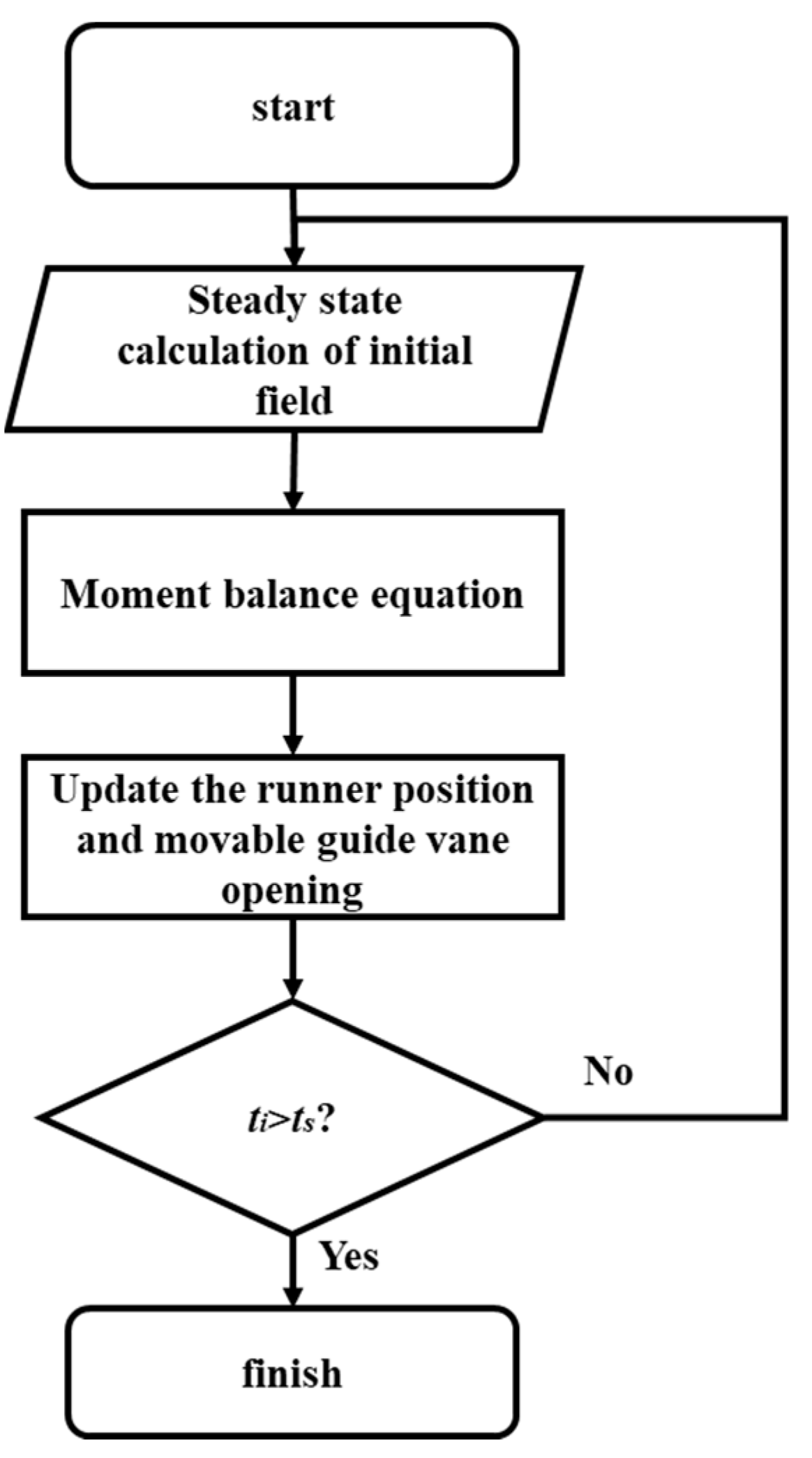
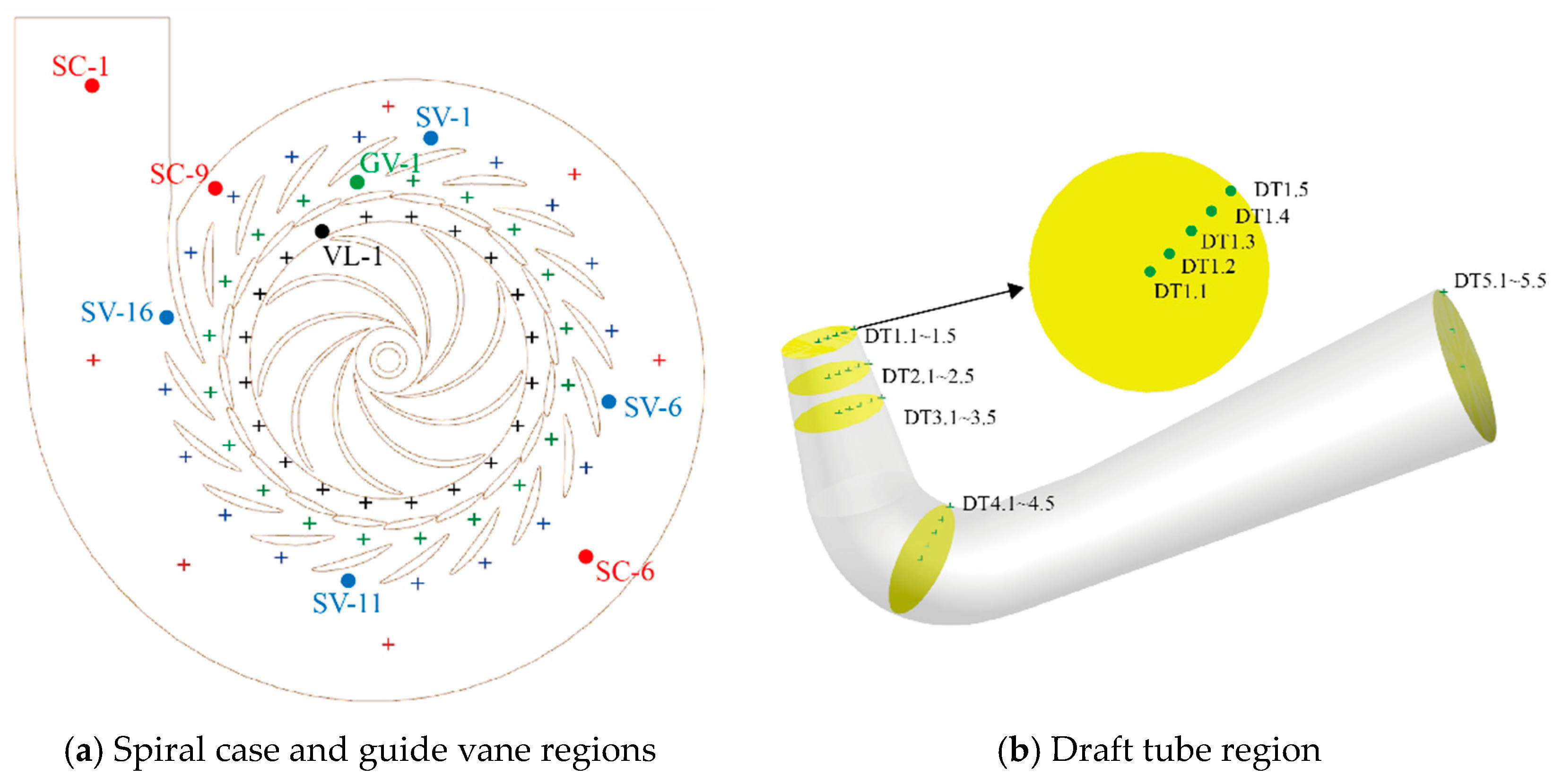
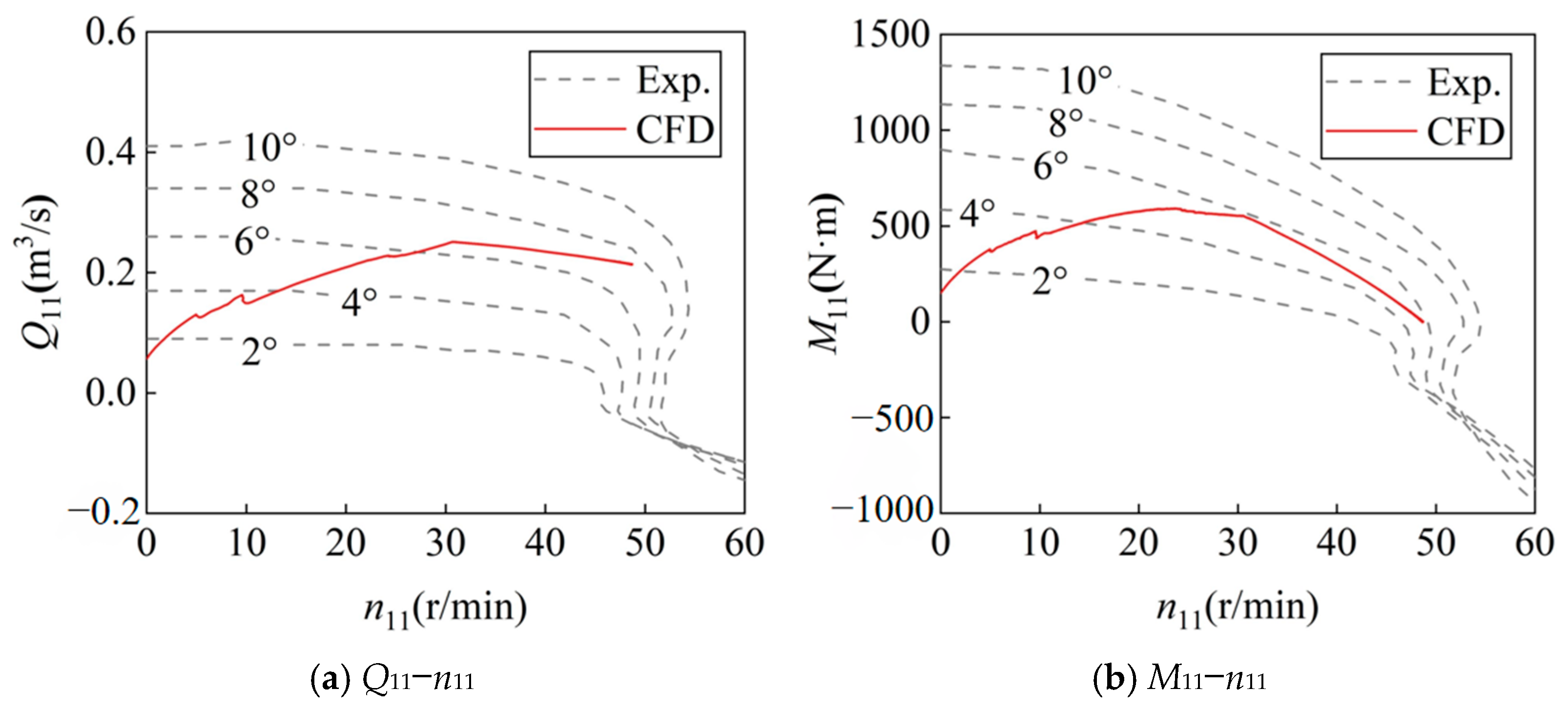
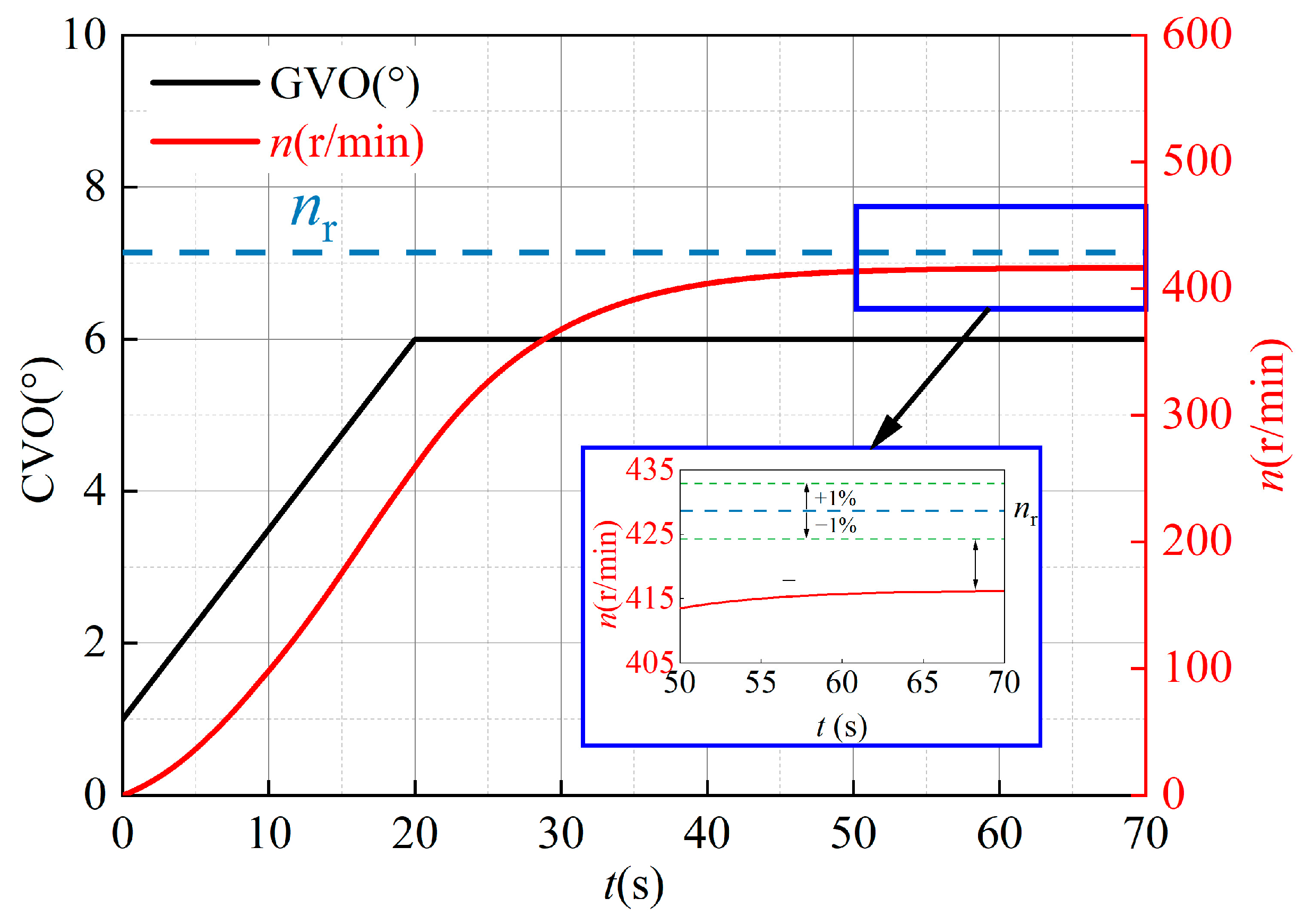
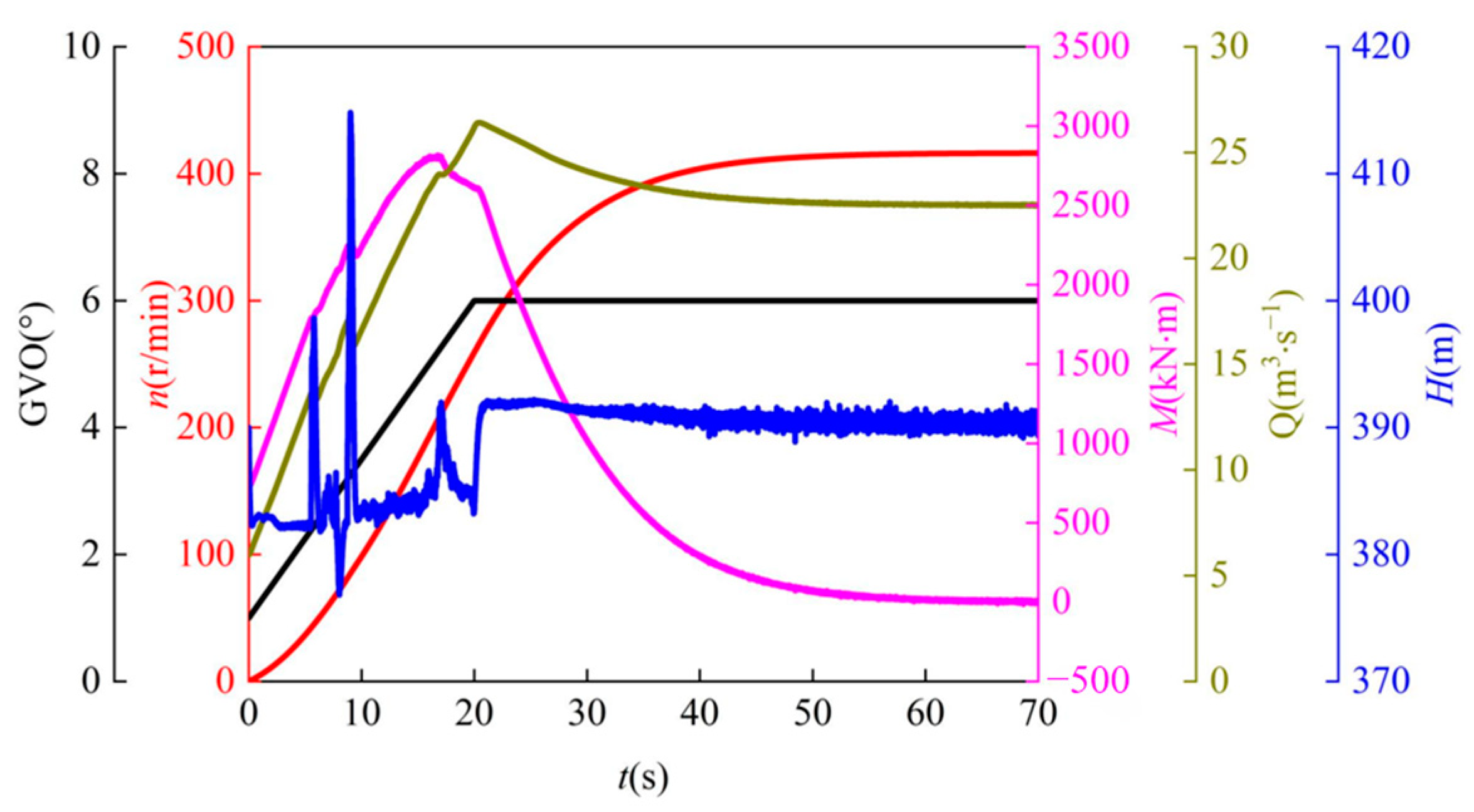





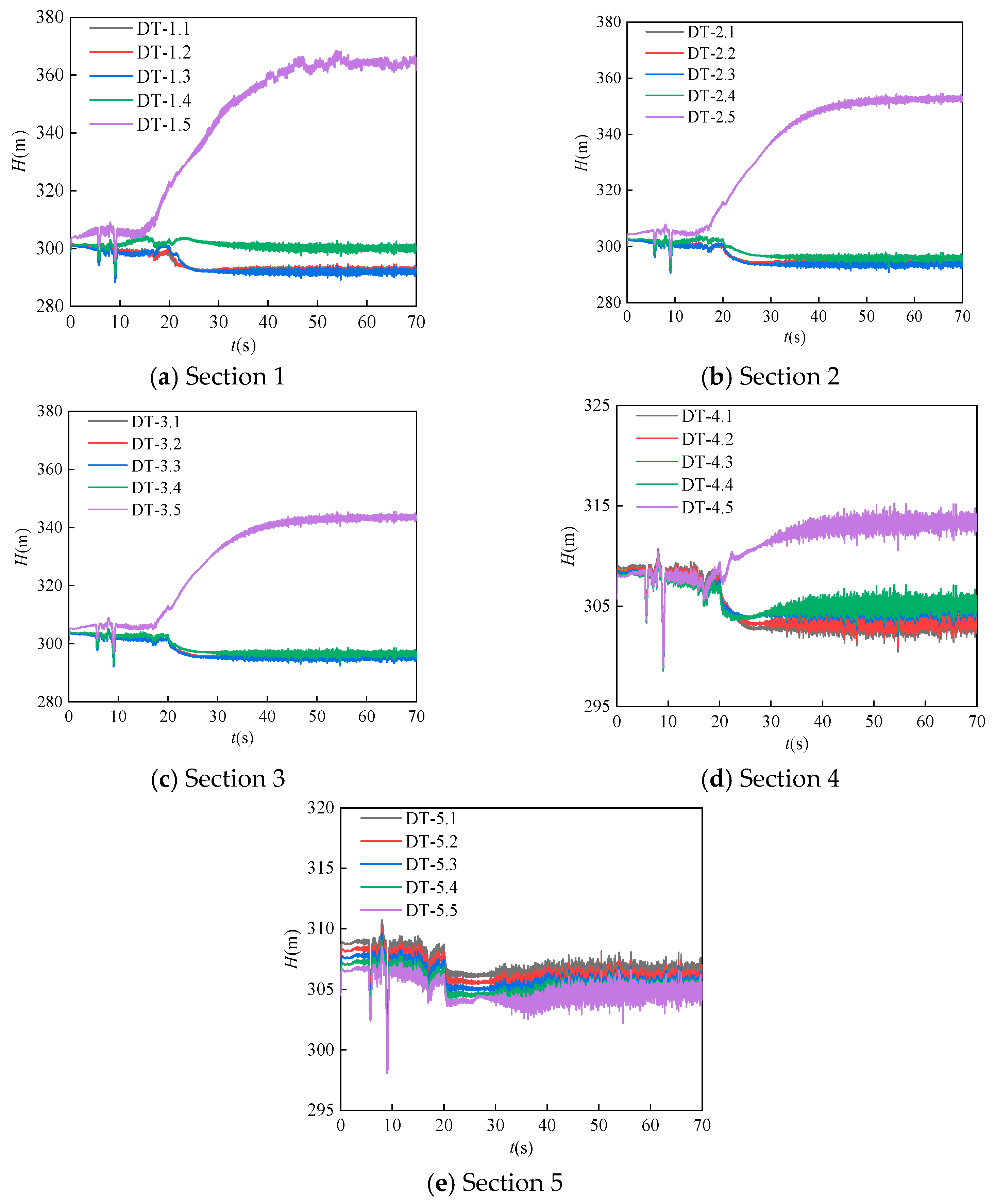
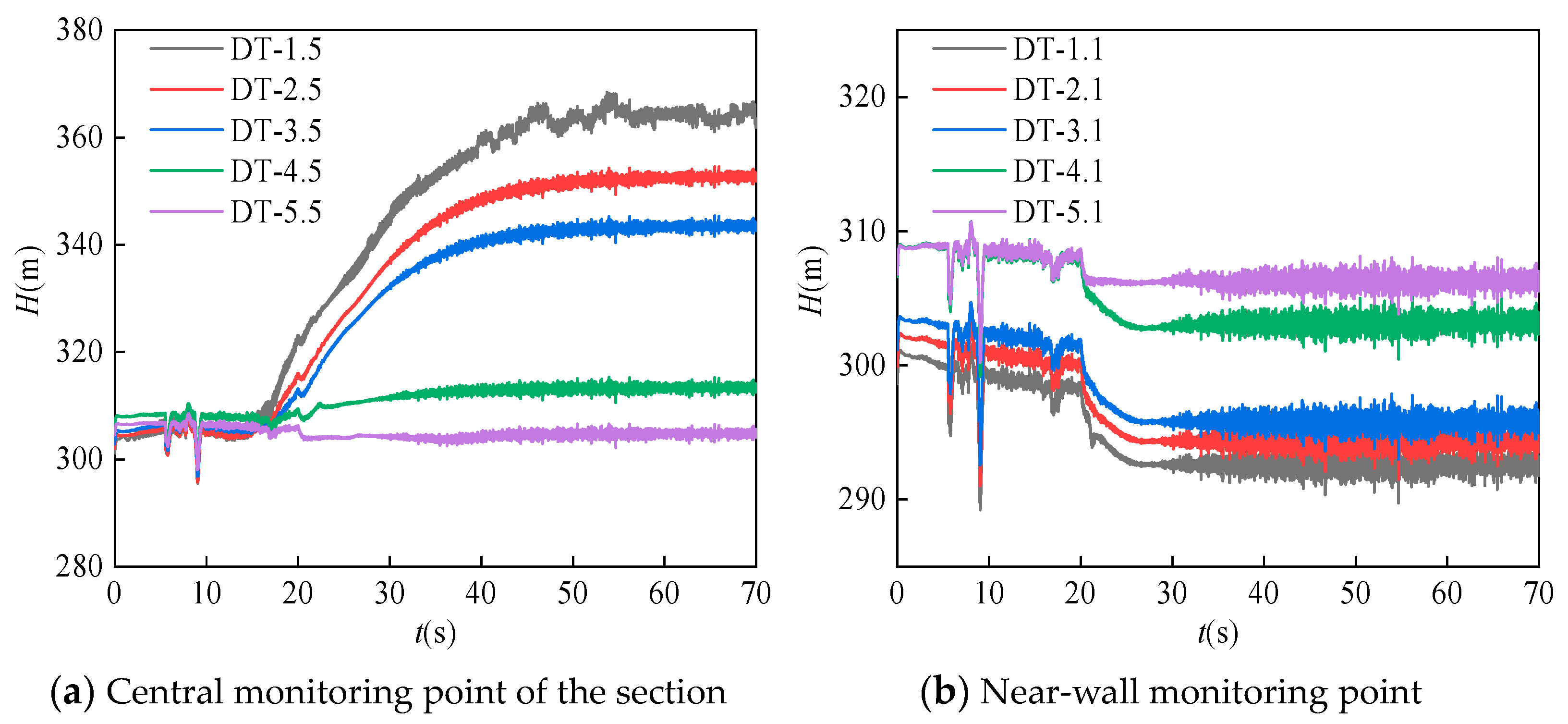
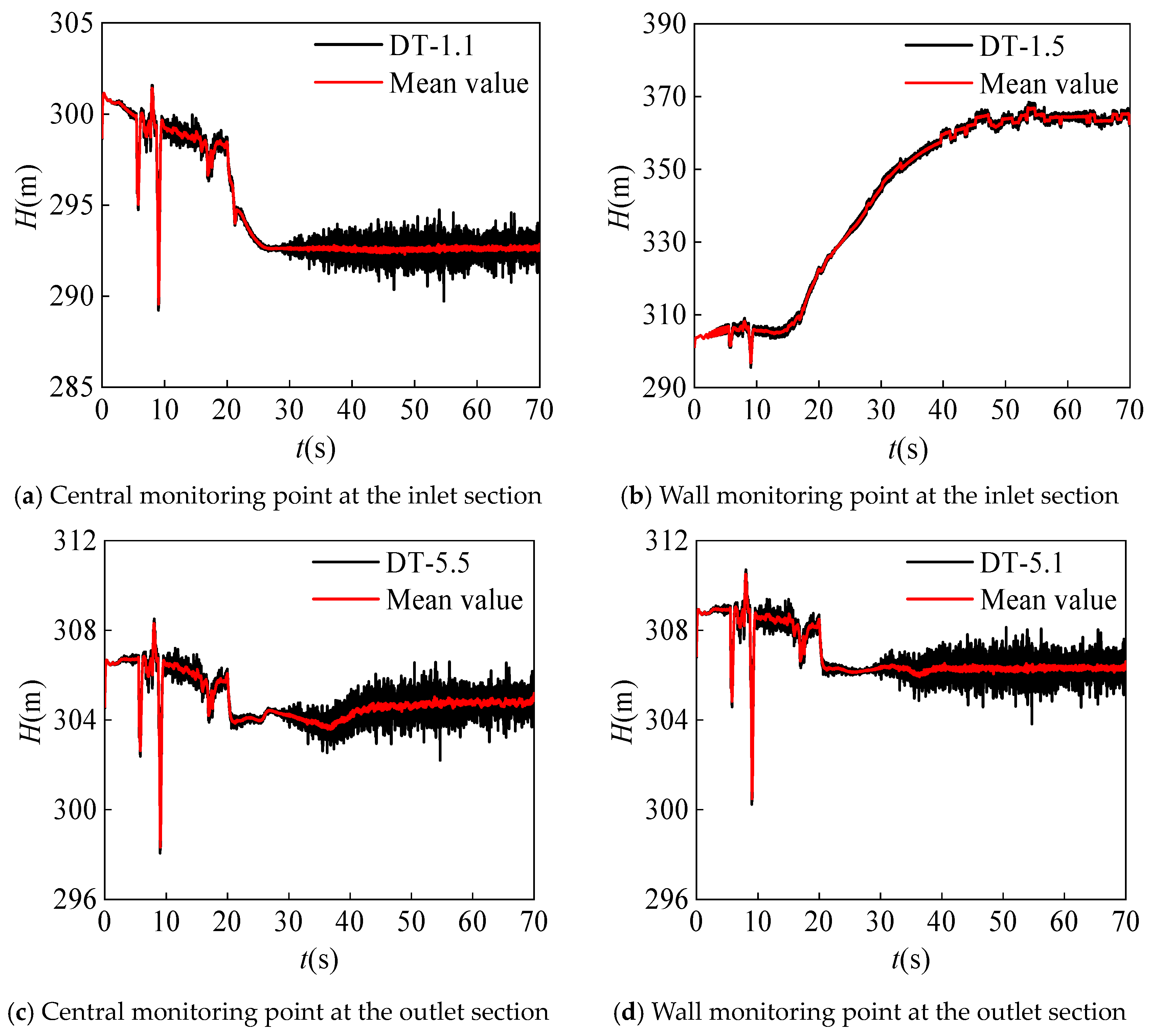
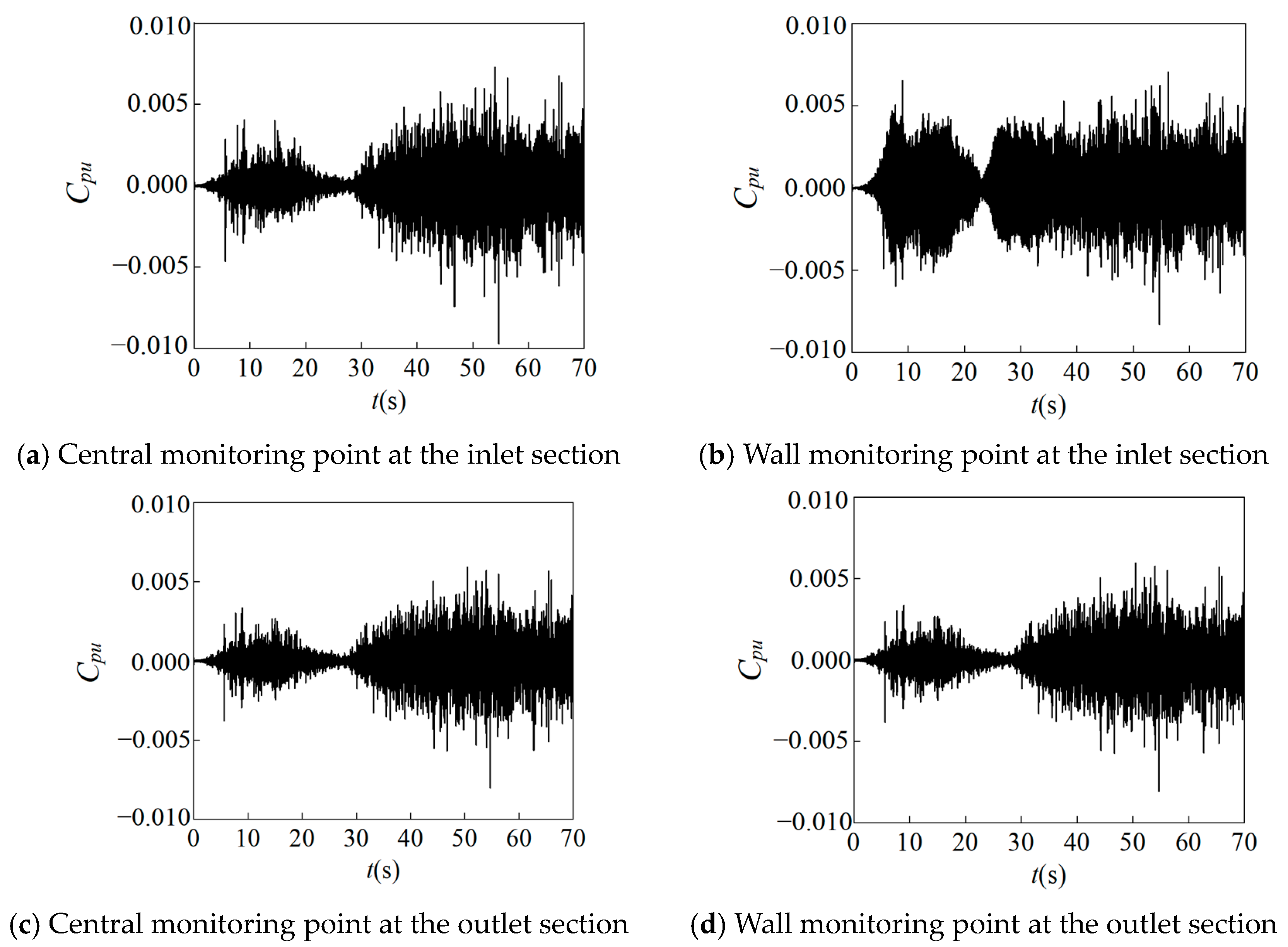
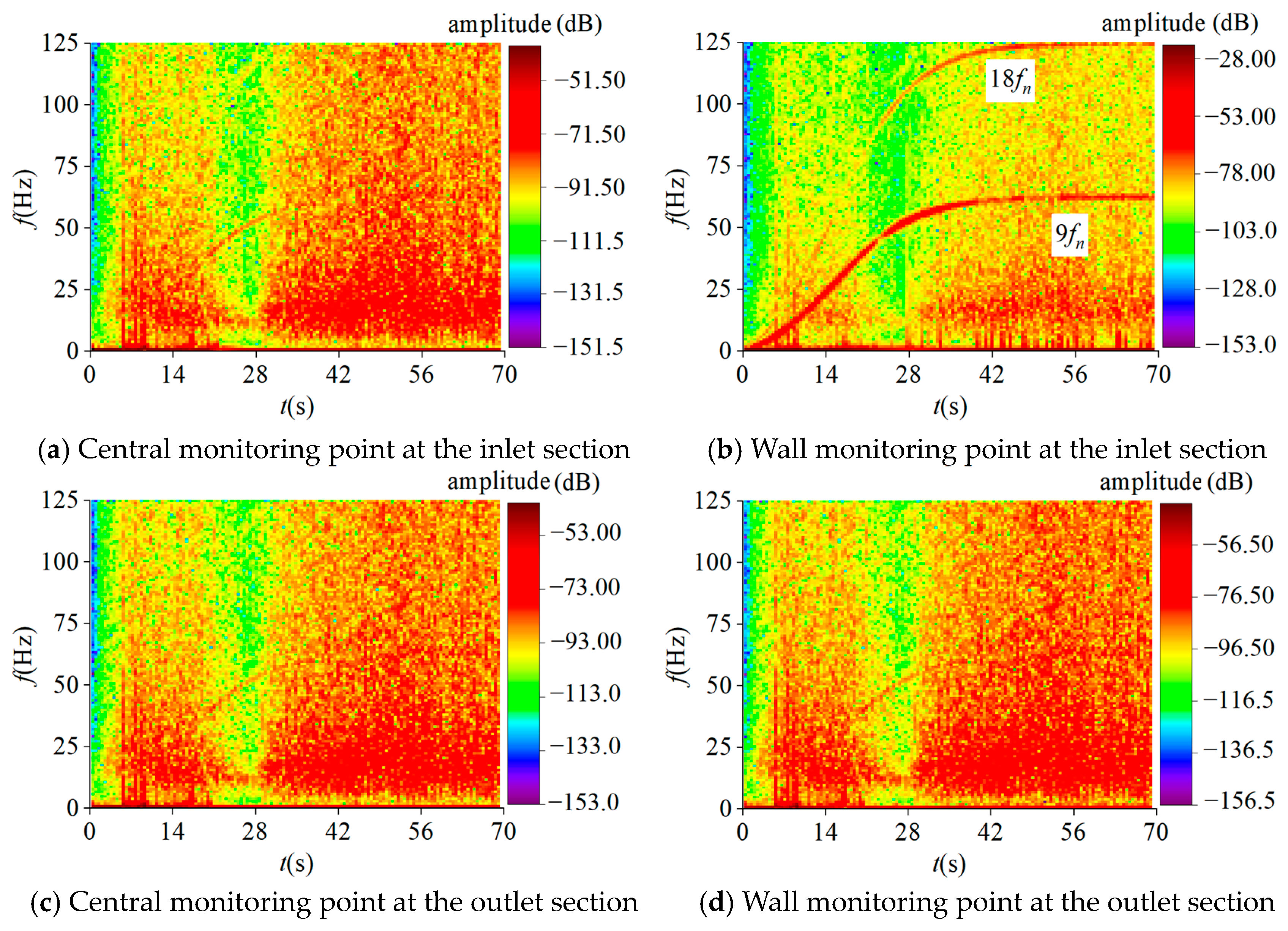

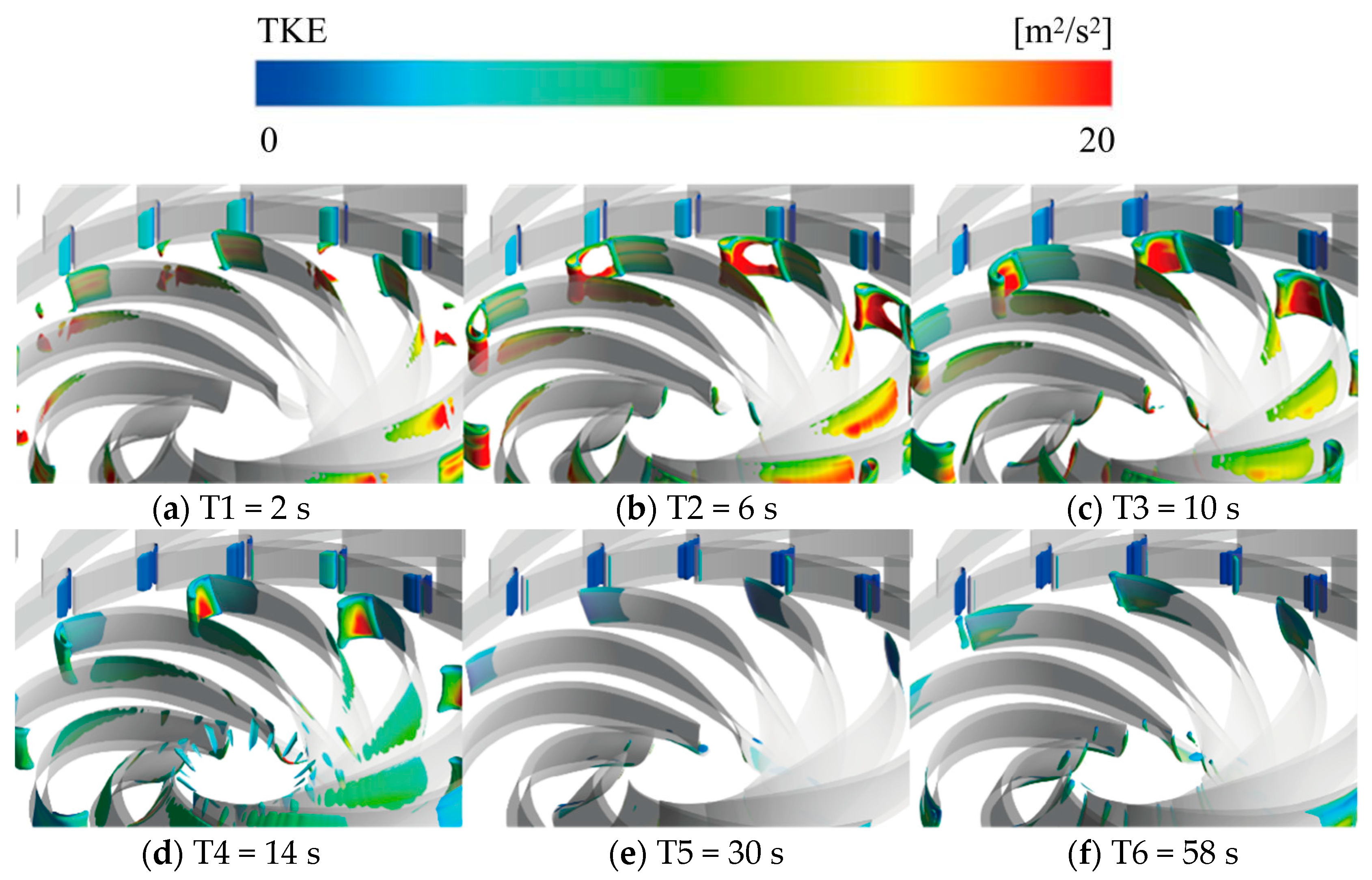
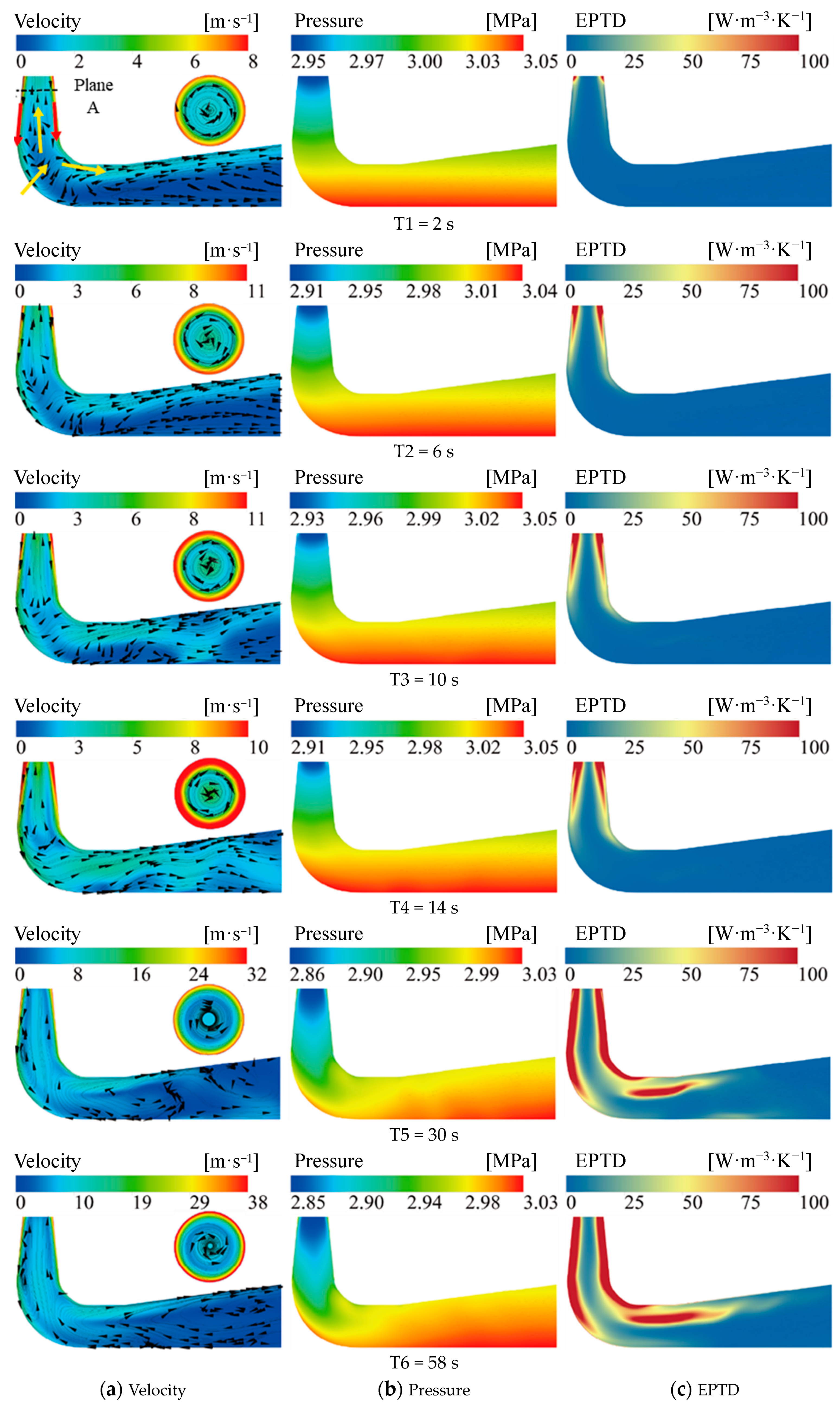
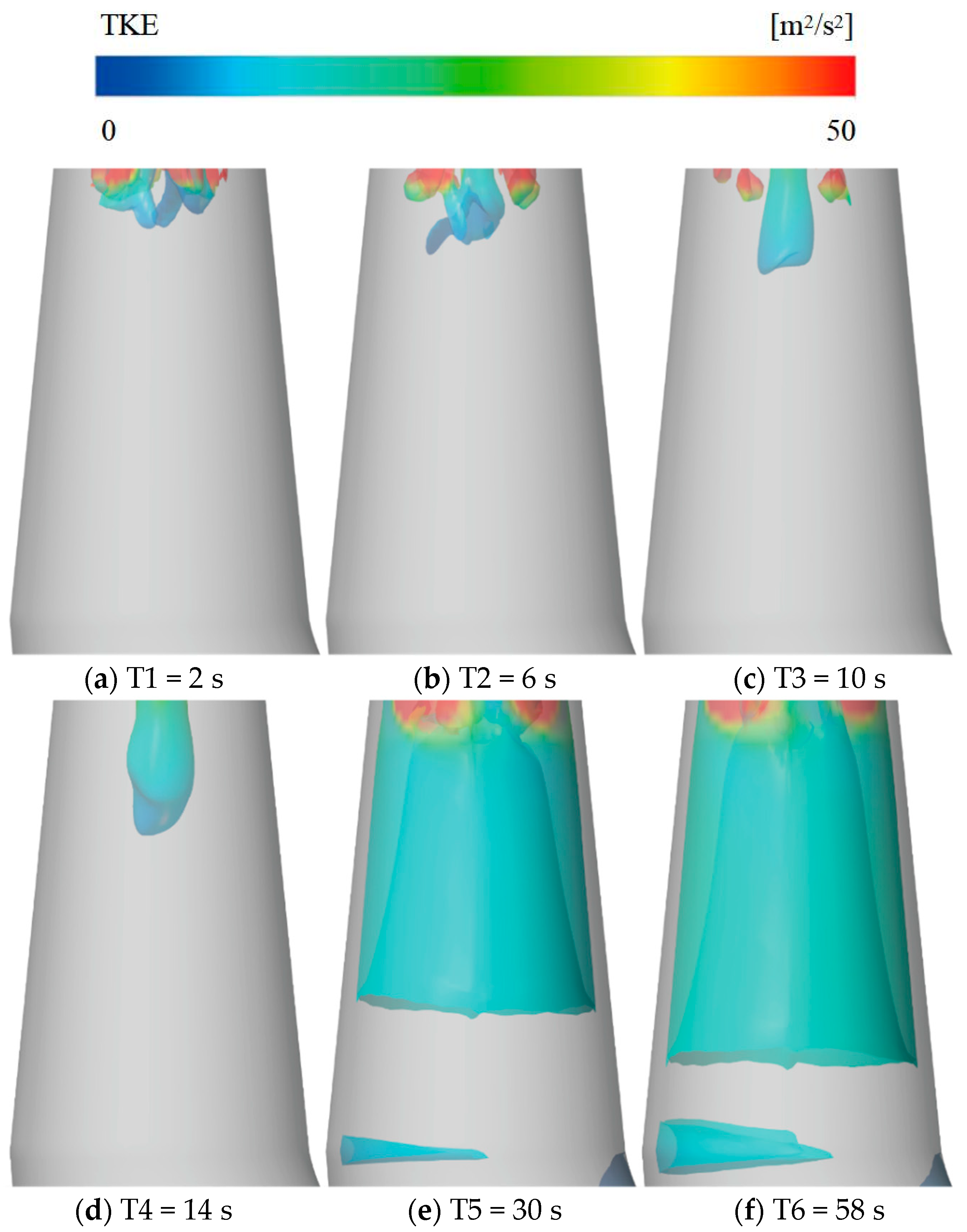
| Present Work | Existing State-of-the-Art | |
|---|---|---|
| Numerical simulation method | Three-dimensional model (3D) | 3D and 1D–3D coupled methods |
| Main research content | Research on the instability and its mechanisms during the start-up process in low-head condition | Primarily focuses on the unit’s flow characteristics. |
| Analytical methods | Analyze the internal flow state using a combination of entropy production theory and vortex identification methods. | Only the external characteristics are analyzed, with less attention given to the relationship between internal flow states and changes in external characteristics. |
| Conclusion | Explain the mechanisms of changes in external characteristics and pressure pulsation characteristics during the startup process and identify the causes of hydraulic instability in pump storage units at low-head conditions during start-up. | Existing literature addresses this aspect only briefly. |
| Parameters | Value |
|---|---|
| Normal upper reservoir water level | 716.0 m |
| Upper reservoir dead water level | 691.0 m |
| Normal lower reservoir water level | 299.0 m |
| Lower reservoir dead water level | 262.0 m |
| Pump-turbine model | HLNA1518-LJ-412 |
| Rated output under turbine operating conditions | 306.1 MW |
| Maximum input under pump operating conditions | ≤325 MW |
| Rated speed | 428.6 r/min |
| Rotational inertia of generator | 6000 t·m2 |
| Rotational inertia of pump-turbine | 240 t·m2 |
| Guide vane centerline elevation | 192.0 m |
| Number of runner blades | 9 |
| Number of guide vanes | 20 |
| Number of stay vanes | 20 |
| Flow Components | Number of Nodes/104 |
|---|---|
| Upstream penstock | 68.8 |
| Spiral case | 104.2 |
| Stay vanes | 52.7 |
| Guide vanes | 136.5 |
| Runner | 182.3 |
| Draft tube | 86.5 |
| Downstream penstock | 69.0 |
| Total | 700.0 |
| Parameters | φ = H (m) | φ = M (kN·m) |
|---|---|---|
| Number of grids N1 | 700 | |
| Number of grids N2 | 591 | |
| Number of grids N3 | 496 | |
| Grid refinement factor r21 | 1.06 | |
| Grid refinement factor r32 | 1.06 | |
| Numerical solution φ1 | 390 | 5476 |
| Numerical solution φ2 | 387.5 | 5445 |
| Numerical solution φ3 | 384 | 5400 |
| Safety factor Fs | 1.25 | 1.25 |
| Convergence accuracy p | 5.77 | 6.4 |
| Grid convergence index GCI21 | 2.00% | 1.57% |
| Grid convergence index GCI32 | 2.82% | 2.29% |
Disclaimer/Publisher’s Note: The statements, opinions and data contained in all publications are solely those of the individual author(s) and contributor(s) and not of MDPI and/or the editor(s). MDPI and/or the editor(s) disclaim responsibility for any injury to people or property resulting from any ideas, methods, instructions or products referred to in the content. |
© 2024 by the authors. Licensee MDPI, Basel, Switzerland. This article is an open access article distributed under the terms and conditions of the Creative Commons Attribution (CC BY) license (https://creativecommons.org/licenses/by/4.0/).
Share and Cite
Wang, T.; Yu, C.; Yang, H.; Zhao, Y.; Zhou, Y.; Liu, H.; Zhou, D.; Kan, K. Investigations into Hydraulic Instability during the Start-Up Process of a Pump-Turbine under Low-Head Conditions. Processes 2024, 12, 1876. https://doi.org/10.3390/pr12091876
Wang T, Yu C, Yang H, Zhao Y, Zhou Y, Liu H, Zhou D, Kan K. Investigations into Hydraulic Instability during the Start-Up Process of a Pump-Turbine under Low-Head Conditions. Processes. 2024; 12(9):1876. https://doi.org/10.3390/pr12091876
Chicago/Turabian StyleWang, Tingzheng, Chuqiao Yu, Haocheng Yang, Yilin Zhao, Yibo Zhou, Hanzhong Liu, Daqing Zhou, and Kan Kan. 2024. "Investigations into Hydraulic Instability during the Start-Up Process of a Pump-Turbine under Low-Head Conditions" Processes 12, no. 9: 1876. https://doi.org/10.3390/pr12091876





